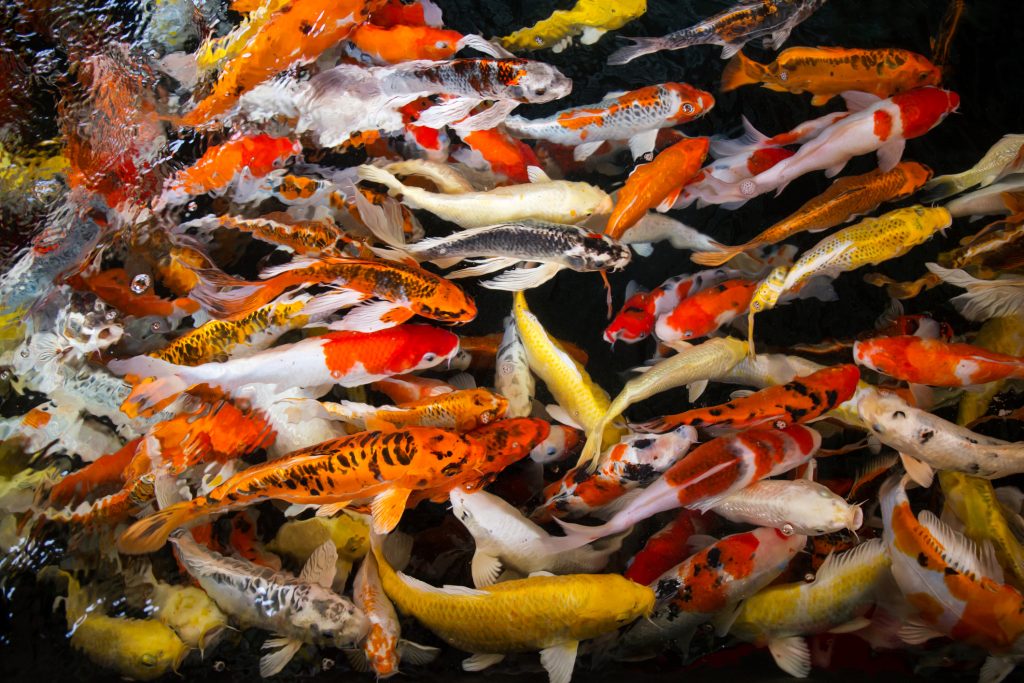Koi are prized for a number of reasons but their coloration is often their most sought after quality. Like many other creatures in nature from aquatic species to birds, a koi’s diet often has a profound impact on their coloration. While koi come in a range of colors and patterns, red is the color that is the most easily impacted by the food you choose.
In nature, koi eat a widely variety of things from plants to animals. When available, they consume large amounts of crayfish and algaes which contain high levels of carotenoids, a fat-soluble pigment. When consumed, these carotenoids impact the pigmentation on the koi’s body.
For ideal color, a readily available source of usable color-enhancing ingredients must be found in order to sustain the desired pigmentation. In many commercially produced koi feeds, carotenoids are offered via spirulina algae, krill, astaxanthin or other color-enhancing nutrients. Spirulina provides added algae levels in a format that are typically found in natural pond algae. Spirulina is a blue-green microalgae that has been harvested and used by people in many cultures as a high protein, nutrient dense food source. When fed to koi, spirulina not only provides health supporting nutrients, but it also offers pigment enhancing benefits. Care should be taken to avoid using too much Spirulina, as it can have negative effects on coloration. The development of red pigmentation is not as simple a process though and takes time and repeated carotenoid offerings. Foods that contain krill, astaxanthin or other color-enhancing ingredients must be fed to koi during their color development stages and when water temperatures exceed 68 degrees fahrenheit. Additionally, continued use of a color-enhancing diet as the koi grows older is required to maintain the desired impact.
Water quality, general health and a stress can also strongly impact the coloration of your koi. An unblemished, white coloration in particular is most easily achieved through excellent water quality and an appropriately sized pond. When the quality of a koi’s living environment is declining, your koi will immediately alert you as their Shiroji (white areas) become pink or start showing vein-like striation. Koi that typically have a deep red pattern will begin to appear lighter in color when their food or environment are not optimal. Koi can also begin to act differently, actually scratching their bodies against hard surfaces (flashing) or acting lethargic and listless.
Hikari® has developed a line of floating koi diets that are proven to rapidly impact coloration in dramatic ways. Take a look at our full line of products for more details.

